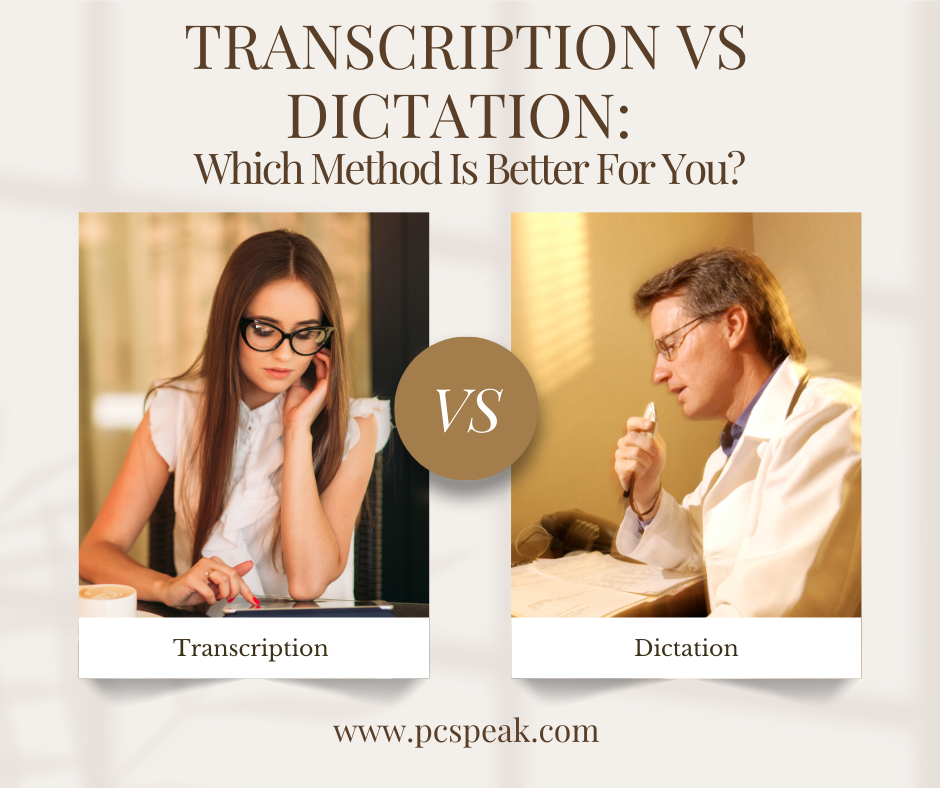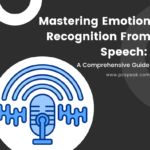In this article, I’ll explore the differences between transcription and dictation, helping you decide which method is best for your needs. Are you tired of spending hours typing out notes or documents? Do you struggle with writer’s block when trying to put your thoughts into writing? Let me help ease your frustration by breaking down two popular methods for converting spoken words into written text. As someone who has been using both transcription and dictation for years, I have first-hand experience with their benefits and drawbacks. Through my research and personal usage, I can provide valuable insights on these two techniques. This article is perfect for anyone looking to improve their productivity or find a more efficient way of creating written content. Whether you’re a student taking notes in class, a business professional writing reports, or simply looking for a better way to jot down ideas, this article is for you. Let’s be real- typing can be boring and tiring. But what if there was a faster and easier way to get your thoughts onto paper? By the end of this article, not only will you have learned about different options available to you but also gained some inspiration to try out something new! So let’s ditch those keyboards and dive into the world of transcription and dictation!
So, Transcription vs Dictation?
The answer to this question depends on your personal preference and needs. Both transcription and dictation have their own unique advantages, so it’s important to understand the differences between the two before deciding which method is best for you.
Transcription involves listening to an audio recording and typing out what is being said. This can be a useful method if you need a verbatim record of the conversation or if you are working with complex information that requires careful attention to detail.
On the other hand, dictation involves speaking into a device or software that will then transcribe your words into written text. This can be a faster method for those who prefer talking over typing, and it allows for more natural language usage without having to worry about spelling or punctuation.
Ultimately, the best method for you will depend on factors such as your typing speed, accuracy in transcription, and comfort level with speaking versus writing. It may also depend on the type of content you are working with – for example, legal documents may require precise transcription while creative writing may benefit from dictation.
It’s worth experimenting with both methods to see which one feels more efficient and comfortable for you. You may even find that using a combination of both techniques works well depending on the situation at hand. Ultimately, choosing between transcription and dictation comes down to finding what works best for your individual needs and preferences.
Understanding the Difference Between Transcription and Dictation
When it comes to capturing spoken words in written form, transcription and dictation are two terms that often come up. They may seem similar at first glance, but they serve distinct purposes. Transcription is the process of converting audio recordings into text. This usually involves listening carefully to a recording, whether it’s an interview, lecture, or meeting, and then writing down every word as accurately as possible. Transcribers pay close attention to details like tone and pauses to ensure the final document reflects the original speech’s meaning. It’s a bit like putting together a puzzle; each piece needs to fit just right.
On the other hand, dictation refers more specifically to speaking aloud for someone else (or a device) to write down what you say in real-time. Imagine sitting with a friend while you describe your day out loud; they take notes as you speak without needing any prior context about your adventures. Dictation can also involve voice recognition software that transforms spoken language directly into typed text on screen—like magic! So when we think of these processes side by side: transcription captures existing recordings meticulously while dictation allows spontaneous creation of written content through spoken words.
Ultimately, both methods serve unique roles in communication and documentation.

Exploring the Benefits and Drawbacks of Transcription Method
Transcription methods can be incredibly useful, transforming spoken words into written text. One major benefit is the ability to create a clear record of conversations, interviews, or lectures. This documentation can help students study better or assist researchers in analyzing data. For instance, imagine a bustling classroom where every insightful comment made by students is captured in real-time. Not only does this allow for easy review later on, but it also promotes inclusivity; those who may struggle with note-taking can focus on participating instead of scrambling to write down everything.
However, transcription isn’t without its drawbacks. The accuracy of transcribed content heavily relies on factors like audio quality and background noise. When recordings are unclear or filled with interruptions, crucial details might be missed or misrepresented. Additionally, relying too much on transcription could lead to passive learning habits where individuals depend solely on written notes rather than engaging actively during discussions. As we navigate these pros and cons, it becomes evident that while transcription methods offer significant advantages for preserving information and enhancing communication accessibly,
they also come with challenges that require careful consideration. Balancing both sides ensures effective use tailored to individual needs.
Read also: dragon naturally speaking v16
Assessing the Advantages and Disadvantages of Dictation Method
The dictation method has gained popularity in various settings, especially in education and professional environments. One of the biggest advantages of this technique is its ability to enhance listening skills. When students or employees listen attentively to spoken words, they naturally improve their comprehension and attention spans. Additionally, dictation can help with spelling and grammar mastery. As individuals hear words spoken aloud, they begin to visualize correct spellings and understand sentence structures better. This method also allows for a more personalized learning experience; teachers can adjust the pace based on student needs, ensuring that everyone keeps up without feeling overwhelmed.
However, there are some notable disadvantages associated with dictation as well. For instance, not all learners thrive under this approach; auditory learners may excel while visual or kinesthetic learners might struggle to keep up with spoken information alone. Furthermore, relying solely on dictation could lead to a lack of critical thinking skills since it often focuses on rote memorization rather than encouraging deeper analysis of material. Another concern is accessibility—students with hearing impairments may find traditional dictation challenging unless proper accommodations are made.
Overall, while the dictation method offers unique benefits in enhancing language skills, educators should carefully consider its limitations before fully integrating it into their teaching practices.
Transcription or Dictation: Determining Which Method is Best For Your Needs
When considering how to capture thoughts or convert spoken words into text, both transcription and dictation offer unique benefits. Transcription involves listening to recorded audio and typing out what is said, making it useful for interviews, meetings, or lectures where accuracy in capturing dialogue is essential. This method allows the transcriber to carefully consider each word before committing it to paper. It’s particularly handy when dealing with complex topics or nuanced discussions that require careful wording. Conversely, dictation involves speaking directly into a device that converts speech into text in real time. This can be convenient for individuals who prefer verbal expression over writing but may sometimes yield errors due to misinterpretations by voice recognition software.
Choosing between the two methods often depends on your specific needs and environment. If you need a clear record of conversations with precise phrasing, transcription might be your best bet as it ensures nothing gets missed or misrepresented. However, if speed and flow are crucial—like brainstorming sessions or drafting ideas—then dictation can facilitate a smoother process without breaking your train of thought. Ultimately, understanding how each technique aligns with your goals will help you select the most effective approach for capturing information seamlessly.



